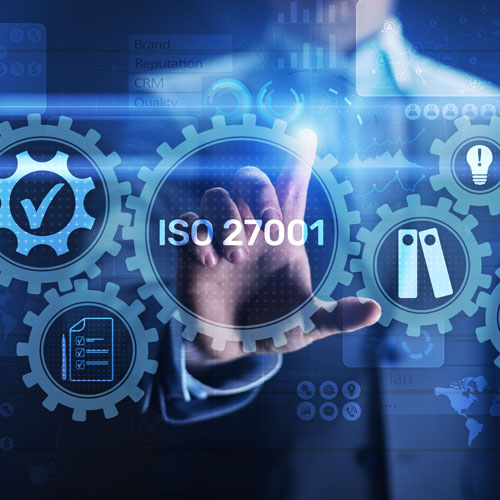Regulatory compliance not only safeguards patients and consumers but also plays a pivotal role in establishing and maintaining trust within the industry. At the same time, it presents a myriad of challenges.
Because regulations are ever-evolving, organisations must remain vigilant and flexible, which often requires considerable investments in human and technological resources.
Balancing compliance and innovation can lead to security concerns and operational challenges — particularly as organisations are becoming more data driven.
By contrast, compliance with regulatory standards also presents some opportunities.
For instance, adhering to Title 21 of the Code of Federal Regulations (CFR) Part 11 and ISO 27001 can help companies to boost operational efficiency, lower costs, improve quality control measures and adopt more robust cybersecurity and data integrity measures.
It's worth looking at the regulatory requirements in more detail to understand their implications for those operating within the pharmaceutical industry.
Title 21 CFR Part 11: an overview
Title 21 of the CFR Part 11 establishes the US Food and Drug Administration (FDA) regulations on electronic records and electronic signatures in the pharmaceutical and healthcare industries.
The FDA enacted Part 11 to ensure the reliability, integrity and authenticity of electronic records. The guidelines have become increasingly important in the age of digitalisation — providing a framework for the secure use of electronic systems that enhances data integrity and reduces the risk of fraud and errors in critical processes.

Part 11 consists of three subparts. Subpart A includes the general provisions. Subpart B includes the criteria for electronic records and Subpart C governs electronic signatures.
Under Part 11, organisations must implement controls, including audits and audit trails, system validations, electronic signatures and documentation for software and systems that they use to process electronic data.
For example, the regulations stipulate that electronic records must be maintained in a way that ensures their accuracy, reliability and consistency throughout their lifecycle. This includes any combination of text, graphics, data, audio or other digital information.
Part 11 also requires the implementation of security controls including user authentication, access controls and data encryption, among others. User authentication, such as passwords or biometrics, helps to prevent unauthorised access to the system.
Access controls can limit which information a specific user can access. Data encryption protects data during both transmission and storage.
In addition, organisations must create and maintain detailed audit trails by keeping a chronological record of system activities that provides a secure and computer-generated time-stamped accounting.
This helps to ensure transparency and traceability in the event of an investigation or audit. The regulation also details requirements for the validation of hardware and software systems, electronic signatures, record retention and standard operating procedures.
The application of Part 11 in the pharmaceutical industry is widespread — relating to different aspects of manufacturing, quality control and document management. Some examples of electronic records governed by Part 11 include electronic data capture systems and batch records.
ISO 27001 explained

ISO 27001 is a globally recognised standard for information security management systems (ISMS). The standard provides a systematic risk-based approach to identifying, managing and mitigating information security risks, ensuring the confidentiality, availability and integrity of data.
Some of the key elements of ISO 27001 include conducting a risk assessment, establishing a set of information security policies, implementing security controls and having a system in place to continuously monitor and improve the organisation’s ISMS.
Whereas ISO 27001 can benefit pharmaceutical organisations because it provides a structured approach to risk management and encourages continuous improvement, one of the largest obstacles for pharmaceutical companies is harmonising ISO 27001 with existing quality management systems and quality standards such as good manufacturing practice (GMP) or good laboratory practice (GLP).
This is necessary to ensure a unified approach to risk management, compliance and continued improvement.
Pharma organisations operating within the US may also be subject to other legislation, including Drug Enforcement Administration (DEA) regulations, New Drug Application (NDA) regulations and the Drug Supply Chain Security Act (DSCSA).
All this presents a unique mix of compliance challenges, largely attributable to complex regulations, evolving standards and the rapid adoption of new technologies.
Keeping pace with these and other requirements requires organisations to invest substantial time and effort — although new digital technologies with regulatory compliance features can streamline many of these processes.
Overcoming compliance challenges
Successfully navigating compliance challenges in the pharma industry requires a proactive and strategic approach. To stay up to date with the latest regulations, it is important to frequently monitor state, federal and international regulations and standards that impact the industry.
Selecting a compliance solution that is regularly updated by industry experts to comply with the latest developments can help to ensure that manufacturers remain ahead of evolving requirements.
In addition, companies can consult with legal and regulatory experts to receive guidance regarding which regulations apply to their organisation, what those regulations require and the measures they can implement to ensure continued compliance.
Regular internal audits and assessments help ensure that processes are effective and align with regulatory requirements. They also help to identify potential areas of improvement and take corrective action to mitigate compliance risks.
To make their supply chains more resilient, manufacturers should establish relationships with reliable providers and develop contingency plans for potential disruptions. In addition, new digital technologies can make it easier to streamline time-consuming and tedious traceability tasks.
The DSCSA establishes a system to trace and track prescription drugs throughout the entire supply chain, from manufacturers to wholesalers, distributors and dispensers.
Technologies with data management and analytics capabilities, blockchain technology, barcodes and radio-frequency identification (RFID) can all play a role when it comes to managing supply chain compliance.
Fostering a compliance culture
Finding staff is another challenge as, like other industries, pharma faces a significant talent shortage. It is therefore crucial to have programmes in place to upskill staff and ensure that they are continuously updated on evolving regulations and best practices.
Employees should receive routine and comprehensive compliance training including the latest data protection and safety protocols … as well as any regulations that apply specifically to their roles.
In addition to implementing robust data protection measures, organisations must establish a compliance culture. This includes encouraging open communication to report potential compliance issues and ensuring that employees understand the consequences of non-adherence.
Finally, manufacturers in the pharmaceutical industry should prioritise quality control with robust and stringent measures throughout the production process … and regularly monitor and evaluate their compliance performance with suitable key performance indicators.
The role of technology
In many ways, the decision to invest in the right digital technologies is the most important step that an organisation can take toward becoming and remaining compliant.
These solutions can streamline time-consuming tasks while eliminating the occurrence of costly errors.
For instance, with the right solutions, it’s possible to streamline reporting processes, improve data accuracy, monitor key compliance metrics and implement proactive maintenance strategies to ensure that equipment is always performing at an optimal level.
Managing regulatory compliance is a growing concern for many organisations. However, leveraging the regulatory frameworks — alongside suitable compliance solutions — can help businesses in the pharma industry to improve their security and operational efficiency.
Given the significant data security challenges that pharmaceutical organisations face, it is critical to implement effective risk management strategies.
Standards such as ISO 27001 provide a comprehensive framework in terms of adopting a risk-based approach to information security. And, with continuous improvement, organisations can refine their information security measures to respond to new threats.
Compliance with Part 11 and ISO 27001 standards also help organisations ensure that there are adequate measures in place to safeguard systems and information in an increasingly complex cybersecurity landscape and ensure data integrity and security.
With the right approach, they can not only confidently navigate the pharma regulatory landscape, but also unlock the benefits of compliance.
